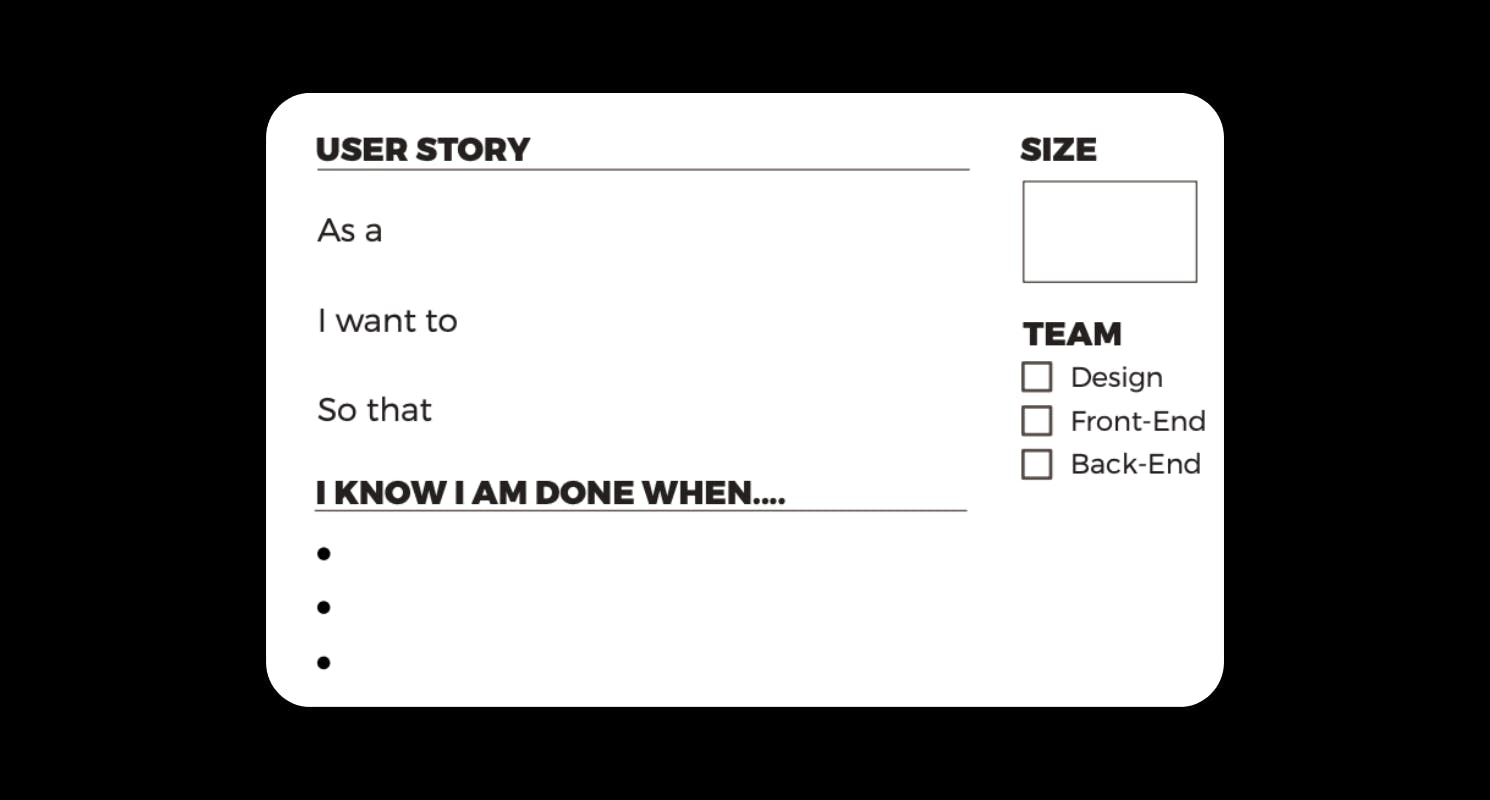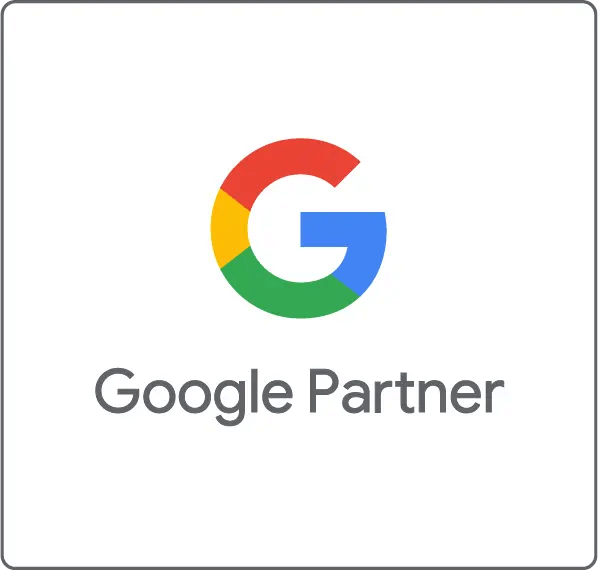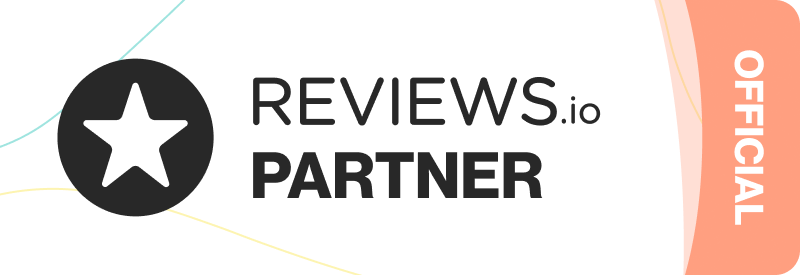Writing an eCommerce Brief [with ecommerce RFP template]

First Published: July 2013 Updated: January 2024
Creating a solid brief and set of requirements for your ecommerce build or replatforming project is essential to align the project with your business strategy and reduce the risk of disappointing outcomes or costly over-runs.
For most complex builds, a pre-project Discovery phase will help all parties to gain a comprehensive understanding of a project's requirements and objectives, but either way, a well-crafted brief or RFP can help to pave the way to long-term success.
Is it time to rebuild your ecommerce website? Or are you new to ecommerce? We’ll guide you through the essential pre-project phase, point out some common pitfalls, and even give you our own Request for Proposal (RFP) document template so you can get your replatforming project right the first time.
eCommerce website replatforming is always a daunting undertaking. Understanding the scope of your project and defining clear objectives is key to success, whether you choose to build in-house or outsource the project to an ecommerce development agency.
We’re experts in ecommerce development, but we also help businesses like yours to nail down your requirements and find out exactly what it is that they really need.
We’ll guide you through:
- How to figure out your own requirements (considerations, budget and specifications)
- Common pre-project pitfalls
- Tendering an RFP [with our free RFP template]
Part One: How to figure out your own requirements
The first part is fairly self-reflective. Whether or not you've ultimately decided you're ready to jump into a project or not, it's critical to understand why you're doing it, what you want and what you're ultimately trying to achieve.
The essential considerations
There are three things you should keep in mind throughout the pre-project stage so write them down and make sure all stakeholders are in agreement:
- Why you want to replatform.
- Your business objectives and key goals.
- Your current key metrics and how you'll measure success.
Writing out why you’re considering a replatforming project helps to keep a focus on the scope of the project at all stages. Some common reasons for replatforming include:
- reaching the limit of your current platform’s capabilities,
- experiencing pain with their existing ecommerce setup,
- you want to reach new markets or audiences
Outlining your business objectives and measures of success will help to dial in your focus on potential future plans. Do you have big aspirations? Or are your expectations relatively modest? What are your turnover projections? If you currently have a website, how much do you expect sales to grow as a result of the project?
Often times, an ecommerce website is just one piece of the puzzle. If your aim is to grow, you'll need to consider your whole strategy, from end to end. From how you design and source your products, to ecommerce marketing, SEO strategies, paid media management, social media, PR, logistics, warehousing & distribution and everything in between.
Starting out with a clear idea of your objectives can help you understand the parts of the puzzle you’ll need to work on to truly achieve these goals.
Making a note of monthly traffic levels, conversion rate, AOV and revenue will help you (and the development partner you work with) to understand what baseline performance looks like.
Your ecommerce website budget
It’s important to check that your budget matches your goals and objectives. In the world of ecommerce you always get what you pay for. It saves everyone a lot of time if you are open and honest about your budget from the start.
Designing and developing an ecommerce site is a time-consuming process and development agencies will charge for their time. The longer the project takes, the more expensive it can get.
Understand exactly how much this could cost before committing with our ecommerce Discovery services.
Be aware that it can take a lot of development to replicate any custom features that you’ve built up over the years, we often see this get time-consuming when businesses move from bespoke ecommerce platforms.
If your business is new to ecommerce then you might be free of ‘technical debt’, but if you rely on complex operational procedures you might find a website getting expensive too. Luckily, there are some very capable off-the-shelf platforms available.
If your budget is less than ~£20,000, we would say that your best bet is to set up a template website on a SaaS platform like Shopify. Although Digital Six doesn’t take on projects within this budget range, there are freelance designers that specialise in setting up templates on the platform.
For a fully tailored and custom design you should expect to pay more than £40,000, regardless of the platform (or solution) you opt for. These projects normally involve several weeks worth of designer’s time, consultancy from an SEO expert (we do that too) and at least a couple of months for development time.
It is important that you have a realistic budget set aside for the project as a whole along with ongoing hosting, licences, maintenance, support and marketing.
These costs can vary significantly based on your chosen platform, the complexity of the website, the level of customisation you need, and the specific services your ecommerce business requires. Here's a rough breakdown…
1. Ongoing Hosting
For a site of this size, you would likely need a dedicated or cloud hosting solution. Monthly costs can range from £80 to £1500+, depending on the provider and the level of traffic and resources required.
2. eCommerce platform licence costs
Costs for platform licences vary. For open-source platforms like Magento, the cost may be minimal (though a paid enterprise version exists). For SaaS platforms like Shopify or BigCommerce, costs can range from £25 to £300+ per month. Custom solutions or enterprise-level platforms could cost more than £2000k per month.
It’s worth noting that BigCommerce will be open to negotiating platform licence costs, whereas Shopify’s prices are set in stone.
Quick case study
We were approached by a successful ecommerce business with an average annual turnover of £14 million, operating on a custom platform. The client sought to migrate their online store to a more robust, off-the-shelf SaaS ecommerce solution to improve scalability and streamline operations. The client considered Shopify and BigCommerce, two leading ecommerce platforms:
- Shopify offered their Shopify Plus package at $3,650 (£2,890) per month, with pricing based on the client's turnover.
- BigCommerce initially quoted £6,000 per month, including additional costs for future B2B functionality.
Despite the attractive pricing of Shopify Plus, it lacked specific features essential for the client’s business needs. BigCommerce, although initially more expensive, offered more comprehensive functionality, including planned B2B features. After negotiations, BigCommerce agreed to reduce their monthly fee to £4,000.
This case just highlights the importance of prioritising functional requirements and long-term business strategy over upfront costs when it comes to making ecommerce replatforming decisions. Ok, back to it...
Despite the attractive pricing of Shopify Plus, it lacked specific features essential for the client’s business needs.
”3. Maintenance costs
Website maintenance, including updates, security patches, and bug fixes, can range from £500 to £10k+ per month. This depends on the complexity of the site and the frequency of updates needed. For a large site, expect to be on the higher end of this range.
It’s also worth considering that costs might be higher right after you launch your new ecommerce site as you fine-tune your design and features.
4. Support
Technical support costs depend on the level of service required. Basic support might start around £100 per month, but comprehensive support packages, especially for a large site, can easily exceed £1,000 per month. It’s worth noting that platforms like Shopify and BigCommerce will include a level of support on all plans. At enterprise-level plans BigCommerce includes features like priority support and customer success management.
5. Marketing
Digital marketing costs vary widely based on strategy. SEO, PPC, email marketing, social media, and content creation can all be part of this. A small to medium-sized business might easily spend £1,000 to £10,000+ per month on digital marketing across their various channels.
Understanding your requirements
Armed with an understanding of your project budget, ongoing costs, and key considerations it’s time to understand your ecommerce website requirements. Make sure that key stakeholders like ecommerce managers and CEO/CFOs are present, and it’s always good to include people that work in various departments like warehousing staff, customer service agents, or sales people.
Try to answer the following questions, we’ve broken them down into the following sections:
- Website, Customers, Likes and Dislikes Overview
- Your In-House Team
- Target Audience
- Competitors and USPs
- Design
- Products and Stock
- Training & Up-Skilling
- Technical Features, Functionality and Integrations
- Business-Specific User Stories (Optional)
Copy and paste the following questions into a document and get cracking.
Website, Customers, Likes and Dislikes Overview
- Can you provide an overview of your current business model and how your website fits into it?
- How has your existing website supported your business goals thus far?
- How do you envision the new website impacting your overall business growth and competitiveness?
- Can you provide some top-level figures on monthly and annual revenue?
- Are there any specific industry or regulatory requirements that the new website needs to comply with?
- Have you conducted any user research or gathered feedback from customers regarding your current website? If so, what were the key insights or areas for improvement?
- How does your website fit into your overall brand strategy, and what messaging or branding elements do you want to emphasise through the redevelopment?
- Is the primary conversion action only ecommerce or are other actions also considered a conversion? Further specify your conversion actions below.
- What do you feel the major issues are with the current site?
- What do you like about your site?
- Which websites do you admire in your industry/websites you like that are not in your industry? (Provide links)
Your In-House Team
- Who manages website development projects in your business?
- Who will be logging support requests?
- Who will be requesting new work?
- Who will be carrying out testing from your side?
- Who has overall sign off responsibility for quotes and projects?
- Who will be adding content to the site?
- How would you describe your team’s skills and knowledge (e.g. relatively novice in ecommerce and software vs fairly technical)?
Target Audience
- Who is your target audience?
- How do you think your target audience would describe your company?
- How do you connect with your target audience?
- Have any of your target audience raised issues with the accessibility of the site?
- Any additional information that you think is relevant.
Competitors and USPs
- Who are your main online competitors? Please provide a list of links to their websites.
- Who are your main off-line competitors?
- What are your USPs? What sets you apart from your competitors?
- Any additional information that you think is relevant.
Design
- How would you describe the look and feel of the website you would like us to design?
- What are the key messages you want to communicate?
- Are there key design elements that you cannot lose in the new design? E.g. product codes, visible phone number
- Do you have a logo?
- Do you have brand guidelines in place? How strictly do you adhere to these? If not, do you have a logo/fonts/colour palette in mind?
- Are you planning a rebrand?
- Do you currently have image and video assets available that you wish to use on the site? If not, what are your plans for this, are you planning on hiring a photographer for example?
- Are there any sites you have seen that you like the style of? Supply links and any likes/dislikes for each site.
- Are there any design styles you don’t want to see used on your site?
- Any additional information that you think is relevant.
Products and Stock
- Will you be launching your new website with the same products and services as your current site? If, list the new products/ services you will be selling online at launch and have plans to sell in the future?
- Is there anyone in your company that is responsible for product management?
- How many products are there (i.e., how many different SKUs)?
- How complex are your products?
- Do you need configurable products, where multiple sizes and/or colours appear on the same page?
- Do you need bundle products, where multiple products might be bought as a bundle?
- Do you need grouped products, where a range of products might all appear on the same page allowing you to select multiples of all or some of the items in the group.
- Do you integrate directly with 3rd party systems (via API to an ERP system or similar) to manage products, prices, categories, or other aspects of your store?
- If so, what systems do you connect to, and what extra systems are you using to connect them (if any)?
- If required, is the 3rd party system capable of creating all complex products required above or would extra work be required to realise these?
- Do you have a warehousing system? If yes, can you provide any information about your warehousing system?
- Do you amend product data directly in your site admin panel?
- Do you manage stock? If so, is it automated via API, periodically through imports, or manually?
Training & Upskilling
- Do you regularly have new starts that require training? Will you need to find resources to facilitate this training?
- How advanced are your team in using ecommerce platforms such as Magento, BigCommerce or Shopify?
- Do you have any team members that would benefit from training in ecommerce platforms, CMS’s, email marketing platforms, analytics or other software?
- Are there other areas you believe your team would benefit from training in?
Technical Features, Functionality and Integrations
Use this section to detail the functionality and features that currently exist on your ecommerce site. Not all of these might be useful for your website.
If features don't exist, but you’re planning to utilise them in the future, make a note of how you would like them to work.
- Trade/ Wholesale customers including special rules/ pricing or functionality available to logged in trade customers
- Special customer price groups
- Pay on an account (rather than online)
- Invoicing - do you use your ecommerce platform or a 3rd party?
- Customised Reporting/ Dashboard?
- Contact Forms - specifically any custom forms?
- Multiple storefronts and/or websites (supporting different locales, different product catalogues, and so on)
- Multi-currency (if required do you need prices updated based on the exchange rate or do you have a price book in the currency that you enter?)
- Multiple Languages
- Virtual products which don’t require physical shipment
- Downloadable Products, much like virtual products but which customers can download from their account area such as PDF files
- Custom Options on Products, where the customer can enter a name for personalisation or similar.
- Checkout Optimised for Mobile - Paypal, Apple/Google Pay & OneStepCheckout?
- GEOIP detection (detect what country a buyer is coming from to deliver the right content?)
- Shipping Requirements - supply information on shipping rates and restrictions?Postcode Lookup integration - eg Crafty Clicks?
- Live Chat - eg Olark or LiveChat?
- Advanced search - eg 3rd party Elastic or Sphinx?
- Bespoke/specific promotions or sale price requirements, cross-sells / up-sells?
- Accessibility Compliance - e.g. A, AA, AAA level? More information on the WCAG 2 Overview
- Loyalty programme?
- Gift cards?
- Google Shopping (feed?) Google/Bing Ads conversion scripts?
- Analytics - Google Analytics or any others?
- Google Tag Manager (containers and data layers?)
- CRM/lead flow systems such as Hubspot, Salesforce, Infusionsoft et al?
- Instagram feed pulled through to a website?
- Integrated Multichannel management tool - e.g. Channeladvisor
- ERP/ EPOS, accounts or warehouse platform - e.g. Microsoft Dynamics 360, Sage, Veeqo?
- MailChimp, Dotmailer or other email marketing platform (level of subscription also useful?)
Business-Specific User Stories (Optional)
Businesses can often have complex requirements that sit outside the typical ecommerce sphere. This is really where hiring experienced consultants can save you time and money in the future.
Creating “User Stories”, whilst potentially time-consuming, can be a great tool for understanding the “who” as well as the “why” of these requirements. Remember, if you decide to employ an ecommerce development agency you’ll need to communicate these needs.
Describe any bespoke features either on the site already or which you wish to be added as part of the website development. These should be features which either aren’t mentioned above or are not part of a standard transactional ecommerce site. These are formatted like so:
As [User Type]
I want to [Action]
So that [Result]
The user type might be as general as “customer” or as specific as “customer with multiple products in their cart”. Include as much detail as you can, add links to your current site (where relevant) or to other sites that do something similar.
If creating direct links isn't feasible, particularly for an admin feature, the desired process can be described in a clear, step-by-step format to ensure ease of understanding and implementation. Outline each action the admin needs to perform, the expected outcomes of these actions, and any alternative paths for different scenarios, all written in simple, concise language.
Businesses can often have complex requirements that sit outside the typical ecommerce sphere.
”eCommerce Website Features User Story Example
It can be handy to see examples of user stories and how they might work for your business. Here's a simple user story for an external user, or customer in this case:
As an elderly customer
I want to log in with my password
So that I don't get deterred from ordering
Sometimes, especially for back-end or admin functionality, users stories might actually be written up for internal users. Here's one example for a contact centre employee:
As a contact centre employee
I want to have my current caller’s account information loaded automatically
So that I don’t need to copy it manually when taking orders
It's always a good idea to provide as much information as possible in your user stories, at the very least add some detail on:
- Whether or not the feature currently exists
- Additional notes on restraints or where en working example could be found
For example, here's some more detail for the contact centre employee's user story:
"This feature is not currently available but we would like for our call centre employees to be able to pull through customer details by name to make it easier for them to fill out orders for customers."
If you're working in-person, Scott Thomas' free user story cards are easy to print out, fill in, and pin to a board. If you're participants are remote, then Miro's User story mapping template can work really well.

Source: https://dribbble.com/shots/4897089-User-Story-Cards
Part Two: Common ecommerce website pre-project pitfalls
20+ years as an ecommerce development agency gives you a rare opportunity to witness first-hand the most of the common issues that businesses face when planning to rebuild their website.
Being able to ideate and consolidate your businesses requirements into one central document-of-truth is essential but we’ve seen these issues create friction in the process:
Lack of Experience
Companies without prior technical and project management experience may find it difficult to know where to start. They might not be aware of what they need to consider, how detailed a plan should be, or what technologies are even available to them.
Resource Constraints
Small businesses or startups often have limited staff and resources. Creating a comprehensive pre-project document requires time and effort, which can be a strain on already limited resources.
Some agencies, like Digital Six, have Discovery services designed to conduct the heavy-lifting for you. Our team of project managers, developers and technical consultants get to know your business requirements in detail with technical workshops, questionnaires and user story ideation.
Armed with that knowledge, we’ll create a comprehensive website service and feature document so website rebuild objectives are clear and concise from the start.
Complex Project Requirements
We often see complex projects that involve bespoke technology, specialised services, or non-standard use cases of off-the-shelf platforms. Understanding limitations and articulating the requirements clearly and comprehensively can be daunting. This is especially true for companies not well-versed in the specific technical language or industry standards.
Legal and Compliance Issues
Understanding and incorporating the necessary legal and compliance aspects into your pre-project planning documentation can be challenging. Things like data protection laws, industry regulations, and procurement rules are essential to adhere to, especially for public sector contracts or international projects.
Defining Clear Objectives and Scope
Companies may struggle to define the scope and objectives of the project clearly. Unclear or poorly defined objectives can lead to ineffective project proposals and ultimately, the selection of an agency or in-house team that is not the best fit.
Balancing Detail and Clarity
Striking the right balance between providing enough detail, while not making the project plan overly complex or technical, can be difficult.
Stakeholder Alignment
In larger organisations, getting all stakeholders to agree on the core aims of a website redevelopment project can be difficult. Different departments may have varying priorities and requirements, making it difficult to create a document that satisfies all internal stakeholders.
Here, an outside agency with a comprehensive understanding of your business goals can help you be firm about the core priorities.
Budgeting and Pricing Structures
Companies may find it difficult to define their budget constraints and understand the pricing models of bespoke and off-the-shelf platforms. Complex solutions may need extra development time or have hidden costs associated with scaling up later down the line.
Personnel Changes
Anticipating potential changes and how they will be managed during the project lifecycle is crucial. We’ve witnessed countless instances where a business has lost the vision on their website redevelopment project because of personnel changes.
There are cases where a business depends heavily on a single ‘project champion’ for the ideation, planning, and management of a project. This can lead to situations where expensive website development efforts are left unfinished or neglected if that person leaves the company.
With all that information collated, it’s time to combine it all into one central source-of-truth so it can be sent to freelancers or agencies as a request for proposal (RFP) document.
Part Three: Tendering your own RFP [with free RFP document template]
An RFP clearly outlines your specific requirements, goals, and constraints, which helps potential service providers understand your needs and propose solutions that are tailored to meet those exact requirements. It ensures you receive comprehensive and comparable proposals from various vendors, allowing you to make an informed decision.
It can feel like a mammoth task to gather all your requirements, and implement safeguards against things going wrong (like the ones we’ve listed above in the common pitfalls section). Luckily, once it’s done the next few steps are relatively straightforward.
How to create your own RFP document
A good RFP document will contain information on these key areas:
- Introduction
- Project Overview
- Scope of Work
- Proposal Guidelines
- Evaluation Criteria
- Submission of Proposals
- Terms and Conditions
We’ve put together a free sample RFP document template that you can use.
Remember, if all this seems difficult, our Discovery service is designed to help you unlock the full potential of your next ecommerce website. Get in touch with us to find out more.
The next steps
Once you've drafted out your RFP document you’ll need to:
- Review and approve your RFP
- Identify potential vendors (freelancers, internal staff, or ecommerce development agencies)
- Distribute your RFP with a submission deadline
This process leads to more accurate and competitive bids, ultimately helping you select the best vendor for your project based on a thorough evaluation of their capabilities, experience, and approach.
You should expect that a good ecommerce agency (like Digital Six) is likely to ask for further information or clarification regardless of how simple or complex your RFP might be. Don’t take it personally, they’re just making sure the proposal they create is the most suitable for your own needs.
Once you’ve received all your proposals you’ll probably need to shortlist a few out then conduct a round of interviews or presentations.
It’s worthwhile taking your time to meet with all vendors on your shortlist but don’t worry if there’s already a clear frontrunner, it’s always good to compare vendors face-to-face even if you think you’re sure.
And that’s it! Almost. Once you’ve selected the right vendor you should ensure that the decision is objective and based on the predefined evaluation criteria. Then it’s time to negotiate the final terms and conditions with the chosen vendor and sign a contract. Ensure that all legal and procurement policies are adhered to.
It’s worthwhile that you kindly notify the vendors who didn’t make the cut, after all ecommerce is a small world and it’s nice to be nice. Providing feedback is often appreciated and helps maintain a good relationship for future opportunities.
All that’s left then is to kick things off. Organise a kickoff meeting with your new ecommerce development partner to discuss the project plan, timelines, communication protocols, and any immediate next steps to commence the project.
Now you’ve just got to build the thing!
Over to you
We first published this article over a decade ago on the 12th July 2013. eCommerce has changed a huge amount in those 11 years but the basic principles remain the same.
Creating a good ecommerce brief is a lengthy process but following each step diligently will mean you set clear requirements, understand what you’ve got to spend, and ultimately end up with a new ecommerce website that fits your needs.
And remember, Digital Six have been doing this since 1999 so if you think you’re stuck, we’ve probably seen it before. Our Discovery service is designed to help businesses just like yours make sure they build the right website the first time around.
With our experience and your insights, we can collaboratively ensure your ecommerce journey is successful and tailored to your unique business needs.
Learn more about our individual ecommerce services on these pages:






